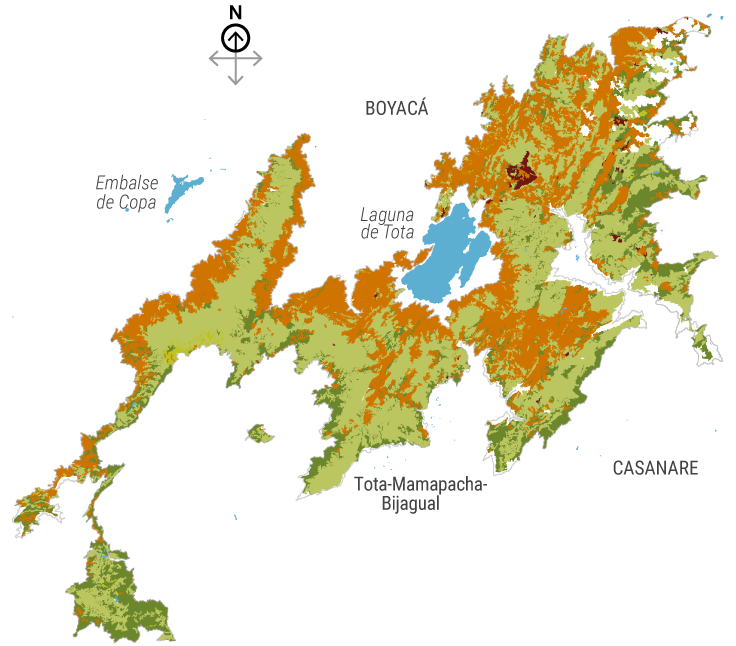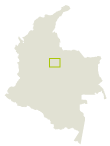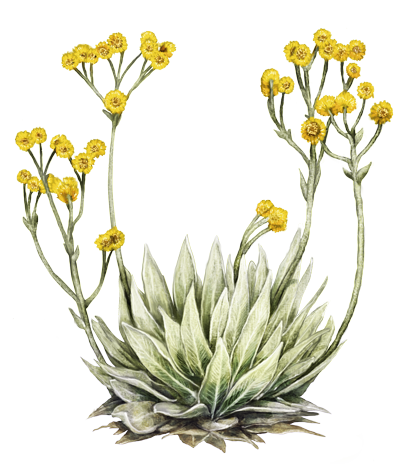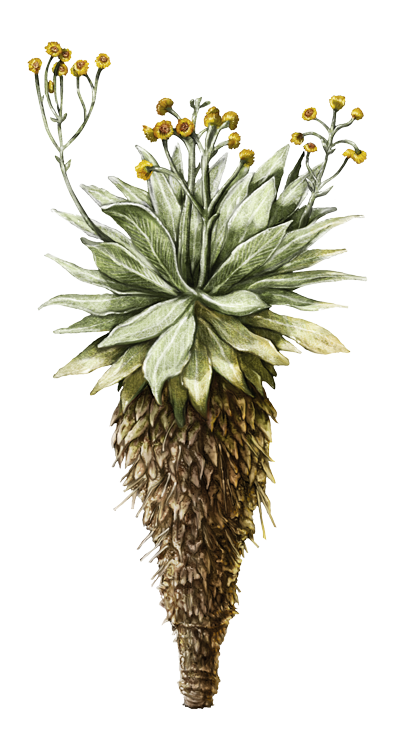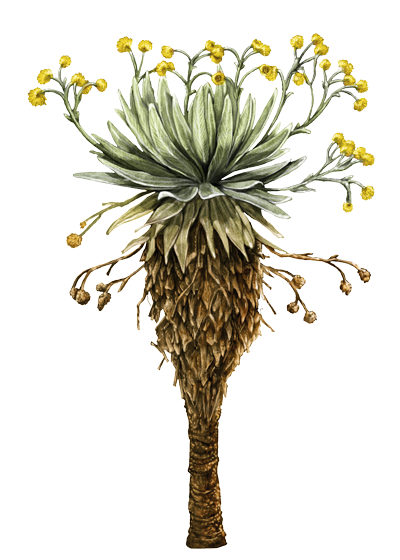The expansion of anthropic activities has transformed great part of natural paramo land covers. This phenomenon has caused significant losses in terms of paramo diversity and the ecosystem services they provide.
The process of transformation in natural high mountain land covers is in great part related to the expansion of productive sectors and the growth and settlement of human populations1,2. The increase of anthropic activities in paramos reduces their size, alters ecosystem structures, and also affects typical flora, fauna, andecosystem services specially those related to water provision and regulation.
An analysis of the two study periods (2000-2002 and 2005-2009) found that 13% of the area of paramo complexes in the country is transformed by anthropic activities. Proportionately more transformations are found in the Eastern Andes mountain range, in which 21% of paramo areas are affected. The areas that follow with high percentages of transformation are Nariño-Putumayo with 11% of the territory under transformation and the Central Andes mountain range with 10%. Anyhow, in most complexes there is an expansion in the use of land covers for agriculture, grasses, and mining.
It has been proposed that the expansion of grasses or crops will imply a constant decrease of paramo land covers, particularly in complexes such as Cocuy and Pisba3. This loss is related to phenomena such as the increasing frequency of fires because using fire is a common cultural practice during the establishment of crops or cattle farms. In the Cruz Verde-Sumapaz complex, 18% of the area has been identified as burnt (between 2001 and 2013). This scenario has been found even inside the Sumapaz National Natural Park4. Since fires damage plants that retain humidity and also alter the properties of soils and vegetation, fire practices will predictably cause a decrease in water resources for urban areas5.
The degree of transformation in paramo ecosystems should heed national, regional, and local authorities to take monitoring and controlling measures in order to regulate the activities that reduce natural covers. Similarly, management plans and strategies should be developed and implemented, and data about tendencies and models of change generated by research groups and the academia should be revised. Finally, coordinating formulas with neighboring communities in order to encourage the maintenance and restoration of ecosystems is of vital importance.
Effective monitoring of biological diversity and geographical analyses that are based on different scales and time periods will allow for the identification of natural or anthropic changes in paramo complexes. This identification will in turn permit the recognition and prioritization of those areas that are threatened, in addition to shedding light upon the possible causes and consequences of paramo transformations.
